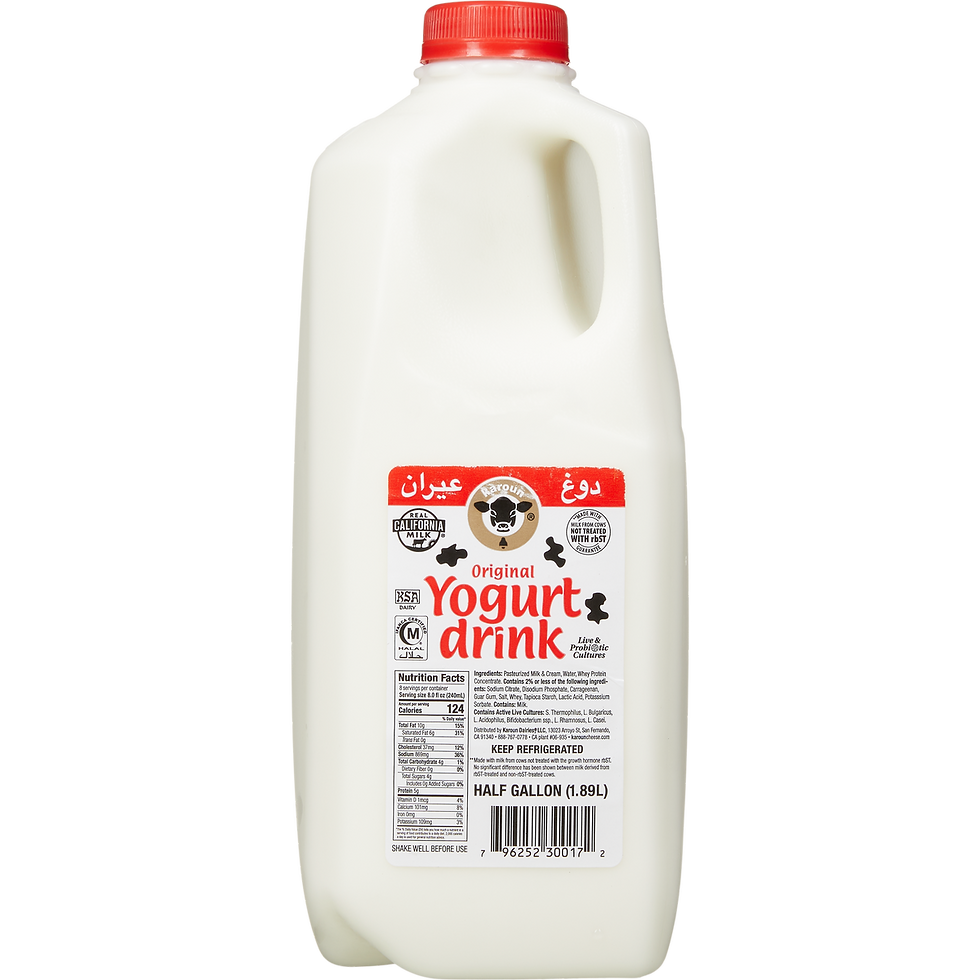Mansaf - Jordan's National Dish
- Eman

- Jul 28
- 4 min read

Auntie Eman’s Authentic Mansaf (Serves 6–8)
A traditional Jordanian dish of tender lamb cooked in a rich jameed-yogurt sauce, served over turmeric rice and topped with fried almonds.
Mansaf is a symbol of generosity, tradition, and Bedouin hospitality. Rooted in the desert culture of the Bedouins, this dish was created to showcase the abundance of lamb and yogurt, two staples of nomadic life. Over time, it became a centerpiece of Jordanian cuisine and is now celebrated as Jordan’s national dish, cherished in both Jordan and Palestine for its rich flavors and cultural significance.
What makes mansaf truly special is not only its taste but also the way it’s eaten. Traditionally served on a large communal platter, everyone gathers around to share the meal together.
Using the right hand, people roll the rice into a ball, tuck a piece of tender lamb in the center, dip it in the tangy yogurt sauce, and gently push it into their mouths. This practice is both a nod to Bedouin customs and a way of bringing people closer, creating a sense of family and community around the table.
Today, mansaf is served at weddings, holidays, and special occasions, symbolizing unity and hospitality.
Ingredients
For the Lamb & Yogurt Sauce:
6–7 pieces of lamb neck or shoulder (each piece approx. the size of your palm, 3–4 oz each)
1 cinnamon stick
3 bay leaves
1 small purple onion, peeled and halved
4 green cardamom pods
½ stalk green onion
17 oz (500 g) liquid jameed*
½ gallon (8 cups) plain yogurt drink*
1 pinch orange powdered food coloring or turmeric
7 ladles (approx. 3 cups) reserved lamb broth
For the Rice:
3 cups medium-grain rice (washed until water runs clear)
2 ½ cups reserved lamb broth
1 tbsp salt
1 pinch yellow food coloring or turmeric
1 tbsp oil + 1 tbsp ghee (clarified butter)
For Garnish & Assembly:
½ cup halved almonds (fried in oil or ghee)
Shraak bread *(thin Jordanian flatbread) or Markouk bread (Lebanese alternative)
Extra yogurt sauce (from lamb pot)
*See notes:




Instructions
Step 1: Boil the Lamb
In a large pot, bring 10 cups of water to a boil.
Add lamb pieces, cinnamon stick, bay leaves, onion, cardamom pods, and green onion.
Simmer uncovered for 45 minutes to 1 hour, until the lamb is halfway cooked and releases flavor. Skim foam as needed.
Strain the lamb, reserve the broth, and set lamb aside.
Step 2: Prepare the Yogurt Sauces
In one saucepan, add the jameed. Stir over medium heat until smooth and it reaches one gentle boil.
In another saucepan, heat the yogurt drink over medium heat until it boils once, stirring constantly to prevent curdling.
Step 3: Combine & Cook
Return the lamb to the large pot.
Add the jameed, yogurt drink, and 7 ladles (3 cups) of reserved broth.
Add a pinch of orange food coloring or turmeric for color.
Simmer gently for 45 minutes, until lamb is fully tender and infused with the sauce.
Step 4: Make the Rice
In a separate pot, heat oil + ghee over medium heat.
Add the washed rice and stir for 2 minutes.
Pour in 2 ½ cups reserved broth, add salt, and a pinch of yellow food coloring or ground turmeric.
Bring to a boil, then cover and reduce to low heat. Cook for 15–18 minutes until rice is fluffy.
Step 5: Assemble the Mansaf
On a large round serving platter, lay Markouk bread flat to cover the base.
Spoon a thin layer of the yogurt sauce over the bread.
Spread the rice evenly on top.
Arrange lamb pieces over the rice and pour more yogurt sauce generously over the top.
Garnish with fried almonds.

Serving Tip:
Traditionally, mansaf is eaten family-style from one platter, using your right hand to form small rice-lamb-yogurt balls with bread.







Comments